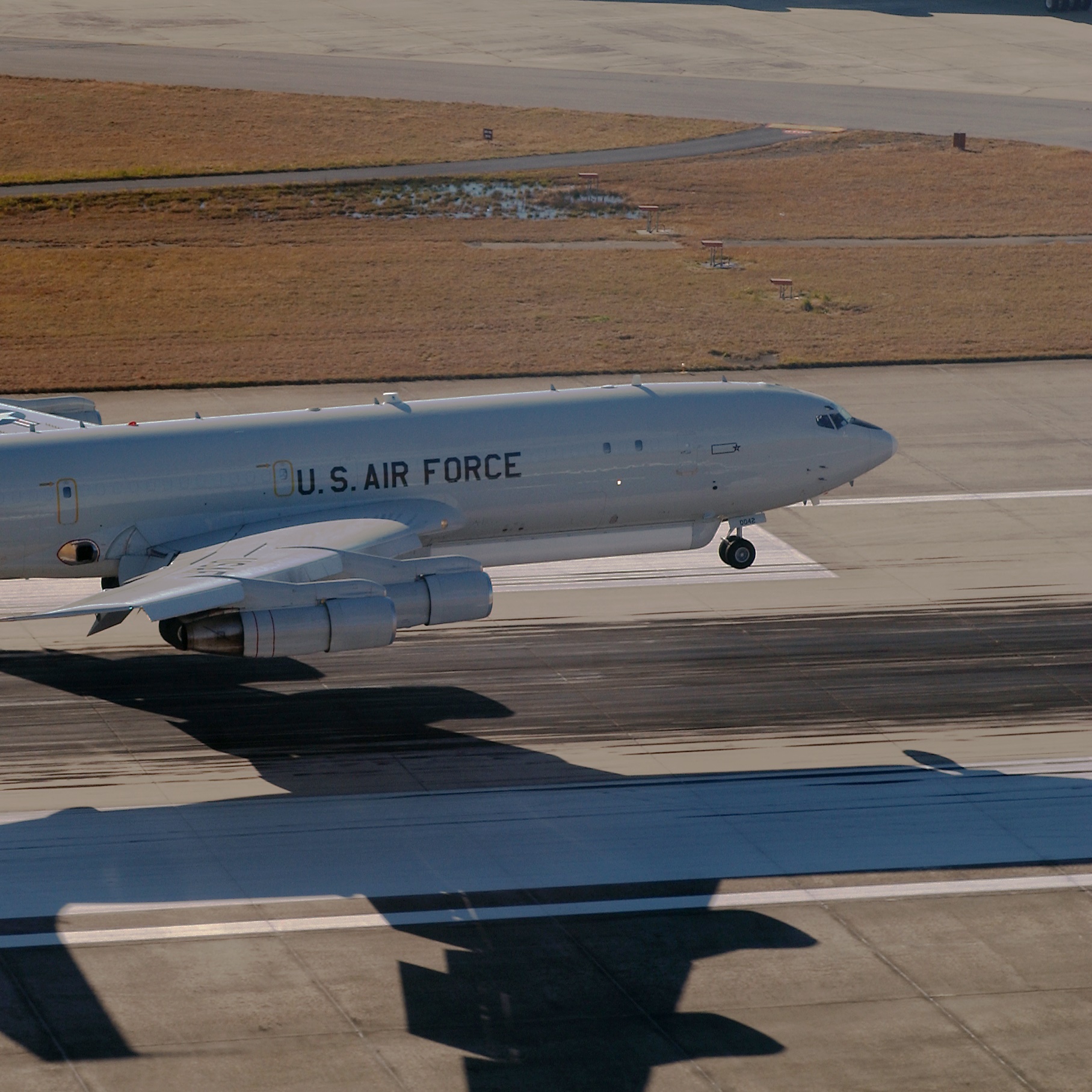Military
Air Force Seeking Bids to Replace JSTARS Surveillance Planes

Published:
Last Updated:

The last week of 2016 was a busy one for the U.S. Air Force and some of its largest civilian contractors. The Air Force on Friday released its final request for proposal (RFP) on a contract valued at around $16 billion for a new T-X trainer to replace the venerable T-38.
The Air Force also issued an RFP to purchase 17 E-8C Joint Surveillance Target Attack Radar System (JSTARS) planes that were first deployed as tank hunters in 1991 during Operation Desert Storm. The contract is valued at $6.9 billion for development and production.
Three teams led by Northrop Grumman Co. (NYSE: NOC), Lockheed Martin Corp. (NYSE: LMT) and Boeing Co. (NYSE: BA) are already working on bids. Privately held Sierra Nevada may inject a surprise bid, and other prime defense contractors could also enter the fray.
Defense Department acquisition chief Frank Kendall used authority ceded to him in the fiscal year 2017 National Defense Authorization Act to waive a congressional requirement that the contract be awarded only as a firm, fixed-price deal. The waiver allows the Air Force to proceed with its planned hybrid contracting strategy that includes both fixed-price and cost-plus elements. Air Force officials had argued that limiting the JSTARS deal to a fixed-price contract would delay the program by months.
Secretary of the Air Force Deborah Lee James said:
We realize intelligence, surveillance, and reconnaissance [ISR] is currently a combatant commander top priority. Given the language in this year’s defense policy bill, we took additional time before releasing the JSTARS request for proposal. With the support of the department on the importance of JSTARS to national security, we are moving out to deliver this critical ISR capability. We will continually look for ways to speed up the process towards initial operational capability.
The current JSTARS aircraft, designated the E-8C, is a second-hand Boeing 707-300 that includes modifications and equipment installed by Grumman prior to its acquisition by Northrop. The plane is now being used to track down oil tankers, trucks and other vehicles used by the Islamic State terrorists in Syria and Iraq. Some of the existing planes have been grounded due to concerns over maintenance, according to Aviation Week. The Air Force RFP for the new planes specifically excludes used, reconditioned or remanufactured aircraft.
Boeing’s 737-700, the smallest of the company’s commercial jets, is likely to be competing against a Northrop design that uses a Gulfstream G550 or G560 business jet and a Lockheed version of Bombardier’s Global 6000 business jet. The Air Force has determined it wants a smaller airframe than the Boeing 767-400ER originally specified and then scrapped in 2007 for cost reasons.
Retirement can be daunting, but it doesn’t need to be.
Imagine having an expert in your corner to help you with your financial goals. Someone to help you determine if you’re ahead, behind, or right on track. With SmartAsset, that’s not just a dream—it’s reality. This free tool connects you with pre-screened financial advisors who work in your best interests. It’s quick, it’s easy, so take the leap today and start planning smarter!
Don’t waste another minute; get started right here and help your retirement dreams become a retirement reality.
Thank you for reading! Have some feedback for us?
Contact the 24/7 Wall St. editorial team.